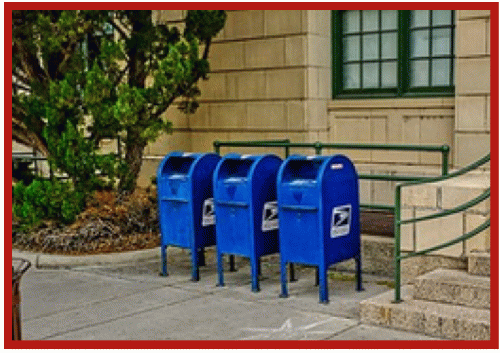My guest today is Steven Rosenfeld, an author, senior writing fellow and chief correspondent of Voting Booth, a project of the Independent Media Institute.
Joan Brunwasser: Welcome back to OpEdNews, Steven. We last spoke at the end of April: How COVID-19 Is Affecting 2020 Elections. At this point, we have almost survived the primary season. Operating under the constraints of COVID-19 certainly hasn't made things any easier. You've been on top of this for a long time. What kind of shape are we in, compared to four years ago?
SR: I think we are in more precarious shape, in many respects, compared to 2016. This election year was going to be challenging. Many states and big-population counties were debuting new voting systems. That means new electronic poll books for voter rolls, ballot-marking devices and scanner/tabulators. So, anytime new gear is introduced, there's a learning curve for all involved: voters, poll workers, officials, campaigns, etc. However, as you know, the pandemic turned that landscape upside down. East of the Rockies, states that never had more than a quarter of their voters cast ballots from homes (most were 10 percent or less) were now expecting a majority to vote by mail. That very fast shift, and all that's involved, has been rough. This is especially true in battleground states.
JB: So, first of all, we've moved further away from the simplest and least expensive of technologies - paper ballots, hand counted - correct? In favor of brand new electronic voting machinery that has made our voting more difficult for voters and those administering the elections and cost many millions of dollars. Is that an accurate synopsis? If so, why is it happening? And does anyone think it's working properly?
SR: Actually, what's developing is a different narrative. What you describe is part of it, in so far you're describing the in-person, polling place voting side of what's unfolding. And what we are seeing in the pandemic primaries is state after state has underestimated how many people will still want to vote in person. Or, in many cases, are pushed to do so because they didn't get the mail-in ballot, or got it late, or are afraid that if they mail it back it won't arrive in time to count.
Voting by mail is using hand-marked paper ballots. The issues with that come before marking the ballot--and afterward. Only a few states are sending ballots to registered voters. Some are sending applications. These have to be filled out, returned, processed. Only then is an actual ballot sent out. Some states are expecting voters to do everything: apply for their mail-in ballot, return the applications, get the ballot and return it, and do it all on time. These steps all have seen delays. Administrators are overwhelmed with five, ten times the volume of paperwork--I'm talking vote-by-mail ballot applications here. They are understaffed to start, plus COVID-19 has thinned their ranks and even closed county election offices for weeks. Contractors have been slow to send ballots out, and have sent out wrong ballots, wrong envelopes.
Meanwhile, there's a COVID-sparked poll worker exodus. There's far fewer in-person voting options. There's bad public information and communication. It all leads to long lines and hours long waits, especially in urban epicenters--where communities of color tend to be. Think about it. Every primary day has these kinds of trends and this is what's been in the news. What's not in the news, mostly, is why. These are low turnout elections--25 percent or so. The fall will see two-to-three times this turnout. We haven't seen fights over vote counts yet, or states missing their vote count and certification timetables. But those are coming.
So, voting by mail is a hand-marked paper ballot environment. But the paperwork tsunami is not being well-handled. And the in-person option, where new equipment is being deployed and causing other forms of confusion, is far more limited than what people assume or expect.
JB: Yikes! What a nightmare. There are so many aspects to discuss. Let's take the low-hanging fruit first. Why can't states and municipalities skip the application process and just send ballots to all registered voters? Why, especially right now, amid COVID, intentionally complicate the process? A cynic might think that maximal confusion and fewer votes counted can benefit certain candidates or parties. Your thoughts?
SR Well, blue supermajority states like California are going to be sending ballots this fall. That is the most administratively efficient. And cost-effective. And some red-run states that aren't considered presidential battlegrounds are sending all of their voters absentee applications. But some battleground states--like Georgia--sent out applications in their recent primary, but said that they won't do that this fall. The burden is on the voter. Ohio, Wisconsin, Pennsylvania, all want their voters to apply first for the mail-in ballot. This is a politically partisan decision driven by GOP-majority legislatures. It's interesting, the state boards of election in North Carolina, in South Carolina, and the statewide association of election supervisors in Florida, all asked their governor or legislature to do more efficient, pro-voter things in a pandemic. They got nowhere.

mailboxes and the USPO: increasingly key players in our elections
(Image by Chuckcars (modified)) Details DMCA
JB: I understand that there have been numerous states with far fewer polling places than usual and many places where votes were centralized and counted outside the precinct. Why is that an important deviation from election practice and what does it mean for voters and election outcomes?
SR: There's really two different kinds of elections going on at once. One is based in polling places. There, voters check in. They get a ballot. They fill it out. It is scanned and counted there--at least preliminarily. If it's not counted, it's usually set aside for a post-Election Day canvass board to review. Meanwhile, the unofficial precinct tabulation is sent electronically to a county election center, where, along with results from other vote centers, overall results are compiled. That's one path. Another is voting by mail-in ballot. There, the envelope has to be vetted and checked in, much like a voter checks in at a precinct. But ballot envelopes are processed inside election offices. The signatures and other info on the ballot envelope are used to verify the voter before the ballot is removed and scanned and counted. So that's a different process and pathway.
What does this mean for the fall? A river of paperwork awaits election workers processing mail-in ballots in states that have no experience (apart from recent primaries) with this volume. How does this impact the outcomes? Well, I'm told that about 75 or 80 percent of mailed-out ballots are filled out and returned. Of those that are returned, some small percentage are not accepted. The signature doesn't match. Someone writes in today's date and not their birth date. Or they don't sign it. In Wisconsin's primary, that was 1.6 percent of all votes cast. That ended up being something like 23,000 votes--about the 2016 margin between Donald Trump and Hillary Clinton. In New Jersey's recent regional elections, more than 9 percent of all of the mailed-in ballots were rejected. And they have no "cure" process for voters in state law.
(Note: You can view every article as one long page if you sign up as an Advocate Member, or higher).






